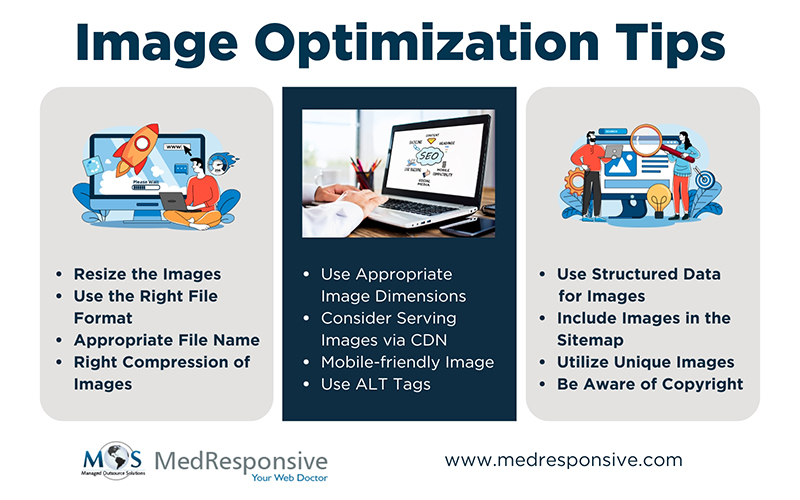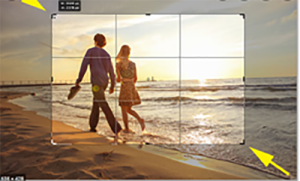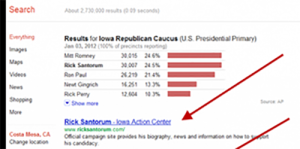There is a popular proverb, “The first impression is the best impression”. When it comes to content marketing, images can create a good first impression. They play a crucial role in making the content more attractive and persuading the audience to spend some time with that content. Experienced affordable digital marketing services utilize images effectively to bring increased traffic to the website.
According to a report by DATA Intelligence, in 2023 the Global Image Optimization Market reached US $153.2 million and it is expected to peak at US $238.7 million dollars by 2031 with a CGPR of 5.7 percent between 2024 to 2031. Your website’s performance, SERP ranks, and search engine visibility can all be enhanced with SEO image optimization. Additionally, it guarantees that visitors to your website will have a positive experience.
Optimizing photos for web searches can become even more important as visual search technology advances. Google is used by billions of people every day to find answers. Recent data by First Site Guide shows that Google Images accounted for an incredible 22.6% of all internet queries.
One of the important factors which make the audience stick to the page is its loading speed. Image optimization improves the page load speed. However, there are even more advantages to utilizing images in the content. These include:
- Provides contextual information
- Improves page optimization speed
- Enhances user experience
- Improves search engine ranking
- Enhances the accessibility of the site
According to studies in the field, about 78% of Americans look for product images on online stores and about 93% made purchases according to the image of the product uploaded on the website. This shows the importance of images for business websites, especially in their online stores.
Why Image Optimization Is Important
Images are one of the most important elements on a website. A compelling image with relevant text encourages the user to explore the website further. Both visible and unseen factors are crucial to image optimization. The quality and design of photographs, particularly in e-commerce, affect clients’ purchasing decisions.
The concept of picture SEO involves making your website’s photos simple for search engines to “read” and “find”. To enhance user experience, content visibility, and Google rankings, visual content SEO is crucial. Images are important visible elements of a website, in addition to text. Poor image SEO can cause a number of problems, including a loss of links, a reduction in organic traffic, and a slowdown of your website due to huge and inefficient images. A user can comprehend and interact with content more easily with the aid of the correct image. Therefore, image optimization should be a component of SEO strategy, the images should deliver the idea that you are trying to convey.
Partnering with a digital marketing company is the best option when it comes to optimizing images and other web page components as part of your online marketing strategy. However, if you are planning to perform the optimization in-house, there are certain effective tips you can follow.
How to Optimize Images for Better Website Performance
- Resize the Image
Image source
Resizing the image is an important process in image optimization. An image with high resolution and larger dimensions often slow down the loading speed of the web page. Always aim to upload an image with a balanced size and quality. Compressing images helps you to achieve this. There are image compression tools like TinyPNG, Kraken, ImageRecycle and so on which you can utilize effectively for compressing images.
- Use the Right File Format
Image Source
People are often confused between file size and image size, taking these to be the same. However, these are different from one another. The image size is the dimension of the image whereas file size is the space needed for storing it. Choosing the right file format is very important. There are certain file formats you can make use of such as WebP, PNG, SVG and JPEG. Each of these formats has its own characteristics.
- JPEG: Suitable for large photos and illustrations. It would provide color and clarity even for a small file.
- PNG: Preserves background transparency in the image.
- WebP: Better than JPEG and PNG. It produces high-quality images even for small sized files.
- SVG: Best for logos and icons. You can utilize CSS and JavaScript for managing images without resizing by retaining the quality.
- Appropriate File Name
Image Source
The file is another important aspect. Appropriate file name helps to improve the ranking of images in image search results. Before uploading the image, give relevant and descriptive keywords to make it more effective. Add target keywords at the beginning and separate the rest with hyphens. Always remember that search engines do not recognize underscore. Thus, avoid using underscore. Another important factor is that the file name should make sense to both humans and search engines.
Always remember that the file name would give more contextual details about the image and is also visible on the site code. Thus, make use of short phrases which describe the image. It enables easy accessibility of the image. Always remember to give a unique file name with SEO elements to enhance SEO power.
- Right Compression of Images
The right balance of image size and file size would make it easy to upload a good-quality image on your website. In business websites, the clear images on the page would make a huge impact. If you compress an image too much, it might negatively impact the quality of the image. On the other hand, if you compress the image at a smaller rate the quality of the image would be too high. Thus, the right compression rate is very important for uploading the good quality image.
- Use Appropriate Image Dimensions
Image dimension refers to the width and height of the image based on pixels. Using images with incorrect dimensions will slow down the website load speed. For instance, if you are using a 500 x 500 px image for a 50 x 50 px thumbnail, the browser will have to download and scale the picture properly before displaying it to site visitors. The best way to avoid this is by serving scaled images. Scaled images adjust to the exact dimensions required by the website (whether it is a full-width image or a small thumbnail).
- Consider Serving Images via CDN
Utilizing a content delivery network (CDN) to serve static content can significantly improve a website’s performance. Instead of relying on a single server to transport many megabytes of data for each visitor, a CDN provides global reach. A CDN caches the requested content and subsequently delivers it from a geographic location closer to the website visitor. This means the data travels a shorter path, which leads to faster load times for your website and all its media content. In short, without optimizing the images, a CDN already speeds up the page load times.
Here are some benefits of using an image CDN –
- Enhanced user experience – Image CDNs automatically shrink images, converting their format according to the user’s device and image’s content. This is especially useful when users access websites such as eCommerce shops, which can display several thumbnail images on each web page.
- Better site speed – When web images are stored in an image CDN, they don’t need to be optimized every time a new device requests to load them. This is because a CDN server uses caching, speeding up the time it takes to deliver images.
- Mobile-friendly – Advanced image CDNs ensure that the images are properly displayed across all devices. It adapts and compresses the images according to the user’s device and network conditions.
- Constant uptime – Typically, image requests are served by the most recently cached data. If the CDN server is down, the page will still load normally.
- Mobile-friendly Image
Image Source
Today, most people utilize mobile phones to surf the internet. Half of the internet traffic comes from mobile devices. Thus, the images along with the content should be mobile-friendly as well. The right file type and compression automatically make your image accessible for mobile users. Make sure that the image used along with the content does not slow down the loading of the webpage on mobiles.
- Use ALT Tags
Image Source
ALT text or alternative text is a written description of the image and also helps the readers understand the purpose of that image. It also helps Google to determine the relevance of that image in the search query. In other words, alt text helps the search engine to understand the image and its purpose. In the absence of alternative text, the search engine cannot index the content of your image. Other advantages of using good alt text along with image include:
- Allows screen readers to read the information about images out loud to users
- Helps to maintain high ranking even though the images are slow loading or fail to load
- Brand-relevant words help to boost visibility
Leveraging structured data or schema markup for your site is another crucial strategy for maximizing the impact of SEO efforts. Basically, it provides clear information about a website page to help search engines fully comprehend its purpose and context, improving the crawling and indexing processes. This is because structured data provides additional information about the images, helping search engines relate them to specific search queries. By using structured data in images, you can increase the chances of them appearing in search results. For instance, use Schema.org to structure data for improving the site’s SEO performance. This collaborative vocabulary assists in locating specific markups for your page and coding it properly.
- Optimize the Page Title and Description
When ranking images, Google also considers components such as the page’s title, meta description, headers, and content. Therefore, an optimized page title and description can help a website rank in image search. Tools such as Ahrefs, Ubersuggest, and SEMrush for keyword research can help identify the most relevant search queries, their search volume, and keyword difficulty. Then, include the relevant keywords on the page title, meta description, and URL. When combined with other image optimization strategies, this will help increase a website’s chances of ranking high on search results.
- Utilize Unique Images
Image Source
There are a lot of images available in different pages which you would find apt for your content. There is nothing wrong in using stock images. However, those images won’t help you to increase the ranking of your website content. It is because many people may be using the same images you select for your content. Thus, it is always better to use unique images for your content which in turn helps you to increase the SEO ranking and visibility. Tools like Photoshop, Canva and others can help you create fresh and unique images that are apt for your content.
- Be Aware of Copyright
There are a number of images flaunted around in the digital space and many may be suitable for your content. However, before using them in your content, check whether the particular image is copyrighted or not. Stock photo websites like Getty, Shutterstock, DepositFiles and so on have copyrights for their images. If you don’t have a license to use their images, they can file a lawsuit against you. They can even demand a hefty fine under the Digital Millennium Copyright Act (DMCA). If you violate copyright law, the DMCA would issue notice. If the owner of the image happens to see their image in your website, then he can file a lawsuit against you for using them in your content without any prior information or permission.
- Include Images in the Sitemap
Image Source
A sitemap is a list of the contents of a website that makes it easy to navigate to a particular webpage. It is an essential factor in a website. You can even add images into those sitemaps. It increases the chances of search engine crawling and indexing images. As a result, it increases the traffic to the site. It is better to add tools like Yoast SEO as it automatically adds images to the sitemap of your website.
Tools for Image Optimization
There are certain tools for image optimization that help ease the optimization process. Some of these tools are:
- EWWW Image Optimizer
- Smush Image Compression and Optimization
- Optimus
- ShortPixel
- Imagify
- Kraken
- JPEG Optimizer
- Optimizilla
- Optimole
- Image Recycle
- Compress Now
- Trimage
- TinyPNG
- Compressor
- JPEGmini
- PNGGauntlet
The proper use of images would help increase the ranking of your website. The above tips, including tips to compress images without losing quality, are valuable when optimizing images on your website. Just like optimizing for images, optimizing for voice search is also essential. At the same time, digital marketing companies handle this task with high professionalism and expertise. Consider hiring a reliable digital marketing firm for best image optimization practices and the highest-quality outcome.












